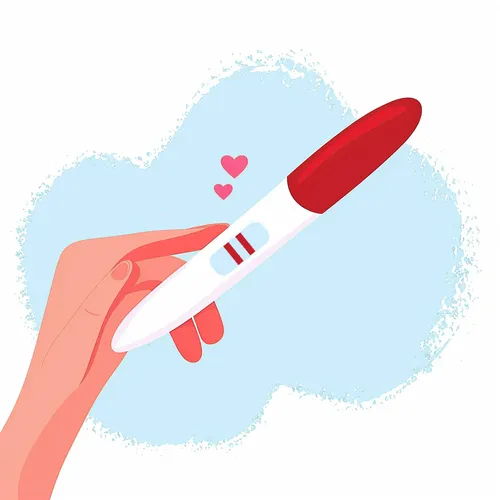The pregnancy test, we all know of it, some have dreaded feelings about it and others can’t wait until they can finally test their pregnancy!
So, when did the pregnancy test exactly come to be? What is one of the early pregnancy tests? How is the situation of Pregnancy test now, in the modern days?
Follow along as I take you through this journey in the world of pregnancy tests…!
One of the earliest written records of a pregnancy test (it was a urine-based pregnancy test to be precise) could be found in an ancient Egyptian document. An ancient document (Papyrus) described a test wherein a woman who might be pregnant could urinate on wheat and barley seeds over the course of several days.
When a woman urinated on the wheat and it would grow, it meant that it would be a female child. Now, if the Barley would grow, it meant that it would be a male child. Of course, if neither showed any signs of growth over the course of a few days than it would mean that the woman in question was not pregnant.
This, according to scholars, has been identified as perhaps the very first test to detect a unique substance in the urine of pregnant woman.
The Fascinating Science Behind Pregnancy Hormones
Have you ever wondered how pregnancy tests actually work? It all comes down to detecting a specific hormone called human chorionic gonadotropin (hCG). This remarkable substance is produced by the placenta shortly after the embryo attaches to the uterine lining.
As the pregnancy progresses, hCG levels rise rapidly, doubling every 2-3 days in the first trimester. This dramatic increase allows pregnancy tests to accurately determine if a woman is expecting. Interestingly, hCG is also responsible for many of the early symptoms of pregnancy, such as morning sickness and tender breasts.
But hCG isn’t the only fascinating hormone at play during pregnancy. Progesterone, often called the “pregnancy hormone”, plays a crucial role in maintaining a healthy pregnancy. It helps thicken the uterine lining, allowing the embryo to implant securely. Progesterone also relaxes smooth muscles, which can lead to some less-than-pleasant side effects like constipation and heartburn.
Oestrogen, another key player, supports the development of the foetus and prepares the breasts for milk production. Together, these hormones orchestrate the incredible journey from conception to birth. So the next time you take a pregnancy test, remember the complex hormonal dance happening behind the scenes!
The Ancient Greeks also had their way of testing, for instance, Hippocrates suggested that if a woman had missed her period she should drink a water + honey solution at bedtime: if this would in turn result in abdominal enlargement with cramps then it was highly likely that the woman was pregnant.
New Methods of Pregnancy Tests
From the middle ages through the seventeenth century a new method was born to test pregnancy. This method consisted of using visual aspects of women’s urine to be able to determine whether she was pregnant or not. This actually became very popular in Europe and also brought with it the “Piss Prophets” who were able to determine a woman’s pregnancy by looking at the colour of her urine.
In the nineteenth century several other theories came to be, for one it was determined that there should be a possibility that the pregnancy urine contained specific bacteria with which one could identify a pregnant woman.
Sadly, at this point, scientists were not able to create reliable tests based off this theory for women and many women were abound to stick to the basics and look at their own symptoms to determine whether they were pregnant or not.
The Beginnings Of Home Pregnancy Testing
It wasn’t until scientists began injecting mice, then rabbits, with urine in the 1920s that the first reliable pregnancy test became available. Several European laboratories found that pregnancy increases a hormone called human chorionic gonadotropin (hCG).
A pregnancy test comprised of nine steps could be purchased off the shelf and taken home by 1978. The test took two hours to complete. An assortment of compounds, including sheep red blood cells, were included in the kit, which also included medicine droppers, a test tube, and a vial of purified water.
A 97% accuracy rate was achieved for positive results, and an 80% accuracy rate was achieved for negative results. The age of home pregnancy testing had begun!
The Breakthrough of the 1960s
You might be surprised to learn that the real game-changer in pregnancy testing came from an unlikely source – a former Manhattan Project scientist. In 1960, Judith Vaitukaitis revolutionized the field when she developed a groundbreaking method to detect hCG levels. Working late into the night at her NIH lab, she discovered a way to separate the alpha and beta subunits of hCG. This breakthrough led to the first antibody-based pregnancy tests that could detect pregnancy just days after conception. Before this, women often waited months for confirmation, making early prenatal care impossible. Vaitukaitis’s work didn’t just create a test – it transformed women’s healthcare forever. Her discovery paved the way for the quick, reliable home tests we take for granted today.
Modern Pregnancy Tests: Highly Effective and Accurate
Luckily for us, these days the modern pregnancy test are considered highly accurate, so much that you probably wouldn’t need to go to a doctor for a “second opinion”. Midstream pregnancy tests are easy to find in supermarkets such as Asda or Sainsbury’s. Best selling brands such as Clearblue and 1st Response are used and trusted by many. These newer pregnancy tests boast that they can detect even the slightest rise in pregnancy hormone, meaning that they can be sued up to 5 days before your period is due.
A study done by Elsevier between February 2010 and March 2011 resulted in data that provides for strong evidence that semi-quantitative home pregnancy tests could be highly effective in identifying ongoing pregnancy. According to the study, the next step would be for further education of women in these tests and if necessary counselling materials so that you can understand the clinical implications of your home test result and have more confidence in interpreting your test!
We agree with this and that’s why we have this website for you, to educate yourself and learn more about pregnancy, tests, and to educate you on the importance of it.
Our Recommended Product
For those wanting the most reliable and easy-to-read pregnancy test, we highly recommend the Clearblue Digital Pregnancy Test with Weeks Indicator. This clever device stands out from other tests because it not only tells you whether you’re pregnant but also shows how many weeks have passed since conception.
What makes this test special is its Smart Dual Sensor technology. Instead of trying to work out what those tricky lines mean, you get clear words on a digital screen telling you “Pregnant” or “Not Pregnant”. If you are pregnant, it even shows you whether it’s been 1-2, 2-3, or more than 3 weeks since conception.
You can use this test up to 4 days before your period is due, and it’s more than 99% accurate from the day your period should start. The display also shows a helpful hourglass symbol while you wait, so you know the test is working properly.
As the brand most trusted by doctors, Clearblue offers peace of mind during what can be an anxious time. The clear digital display takes away any confusion about the results, making this our top choice for home pregnancy testing.
Photo by Anthony Cunningham for Zoom Health UK
Zoom Health is a leading UK supplier of Home Health Tests and Earplugs
This post was originally published in 2023. It was last updated in January 2025.






